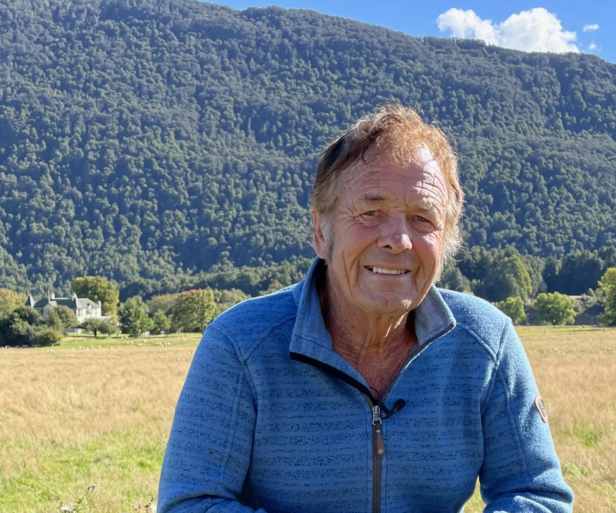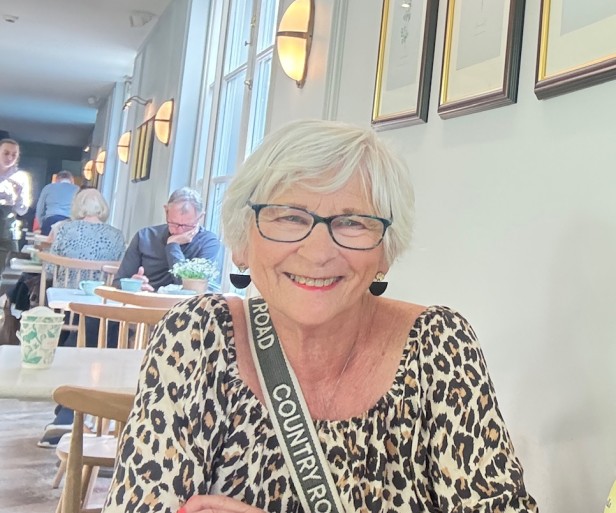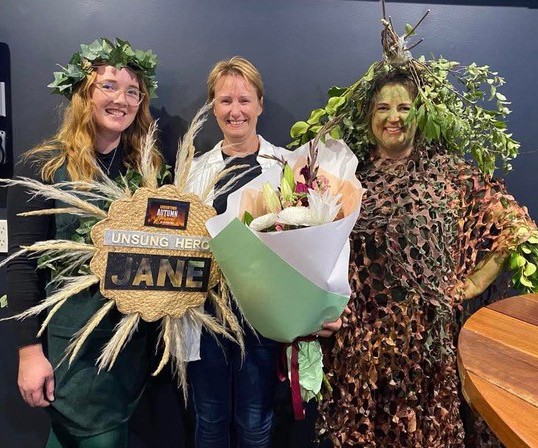Pat Doyle (O’Connell) - Hospitality in a bygone era

The daughter of Queenstown’s two most famous early hoteliers, Pat Doyle (O’Connell), who arrived here aged two in 1937, was number four out of 10 children, gravitating towards hospitality from a young age.
Growing up helping her parents Jim and Iris in the family hotel in Beach Street, Pat worked her way up through the ranks at O’Connell’s Hotel after leaving St Dominic’s boarding school in Dunedin in the fifth form.
The family moved to Queenstown from Invercargill after Pat’s Auntie Mary, who cooked at McBride’s Hotel (later Hotel Queenstown), encouraged Jim, a Railway worker, painter, and paperhanger, to buy what was Beach House boarding house. Mostly government workers stayed there, tourists in peak holiday seasons.
Pat vaguely recalls arriving in Queenstown on the Ben Lomond steamer. Her parents had 10 children between 1929 and 1951, sadly, losing three boys as tiny babies due to a genetic Rh (Rhesus) blood type issue. “Our second youngest sister, Phil (O’Connell-Cooper), was the first person to have a complete blood transfusion. Dad rushed her to Invercargill in the car, just born.” Queenstown councillor Joe O’Connell was Pat’s elder brother.
Gradually her parents added onto Beach House, developing Queenstown’s legendary O’Connell’s Hotel once the first eight-room addition was built, eventually taking over the Garrison Hall in Beach Street to extend further.
In winter Pat slept inside, but initially she, sister Marney and Auntie Mary slept in a large, boarded tent with a corrugated iron roof outside. Her brothers slept in a smaller tent. St Joseph’s School and the Dominican nuns were only a hopscotch and a jump up the hill and the gravel Cow Lane was their neighbourhood playground. The hotel was surrounded by lawns, fruit trees and gardens.
“I was into running away. I’d head off to the wharf and Dad would come looking for me,” Pat grins.
No OSH or swimming lessons back then. “We used to go into Queenstown Bay in row boats. A big wake would come in. We couldn’t swim and didn’t have life jackets.”
The Rec Ground was Jack Hamilton’s (Hammy’s father’s) orchard. Annie ‘Nana Taylor’, a local West Coast character, lived in the cottage on the Shotover and Camp Streets corner, loved a sherry and always had all the news. “The Haines lived down Cow Lane, a brother and sister. I was scared of them. The Zephyrs – Russians, lived on the liquor store site in Stanley Street in the 1940s and had smelly goats.”
“I remember during World War II there was a very heavy snowfall, and the planes came over. I was terrified that the Japanese were coming to bomb us,” Pat says. “We celebrated VE and VJ days in town with parades, lollies and ice creams, and wee flags.” Jim had too many kids to go to war but Pat recalls him practising with the Home Guard, marching with broomsticks because there were no guns left.
The kids were ordered to ‘stay behind the gate’ away from the hotel but enlisted to pod peas and peel potatoes. “Us kids ate in the hotel kitchen, sometimes Mum and Dad too, especially on Sundays.”
In the 1950s there was The Mountaineer, White Star, Eichardt’s and McBrides (later Hotel Queenstown), and Hamilton House and Golden Terrace boarding houses where the Copthorne is. Foster’s Hotel preceded Trans (later Rydges). “We all had staff accommodation.”
Jim eventually leased land above Frankton Road – Cosy Dell, off the Andrews. “We had hens and grew veggies. Us kids milked the cows and separated the milk and cream and made butter for the hotel.”
The Easter Rowing Regatta attracted people from as far as Whanganui and the Labour Weekend Indoor Basketball Tournament was big on the Otago Southland calendar. Iris helped organise the Queenstown Autumn Festival and Ball. “Trucks carrying princesses paraded through the streets.” Occasionally they got to go to the Lake Hayes Show, “but somebody had to give us all a ride”.
Dances and balls at the Garrison Hall were a hit when top bands came from around the region for two weeks during the Christmas holidays.
Pat met husband Alex Doyle while holidaying in Kawerau and after a short romance they were married in May 1963.
Alex worked for Downers and initially it was exciting moving north. “But, oh boy. I got so homesick. I missed everybody, but I got over it.”
Moves and upheavals with their three kids followed, to Tokoroa, Manapouri, Invercargill for the Tiwai Smelter, back to Kawerau, then Napier and Auckland. Tragically, Pat was widowed at 40, with three kids aged eight to 12, after Alex had an accident at work. Pat had also lost a sister aged 39, but she soldiered on for her kids.
Eventually they moved to Dunedin where Pat loved indoor bowls – Best Bowler in her club one year. She worked in the Sacred Heart School office and enjoyed Dunedin for 27 years before moving back ‘home’.










